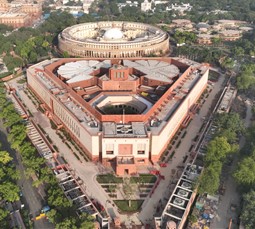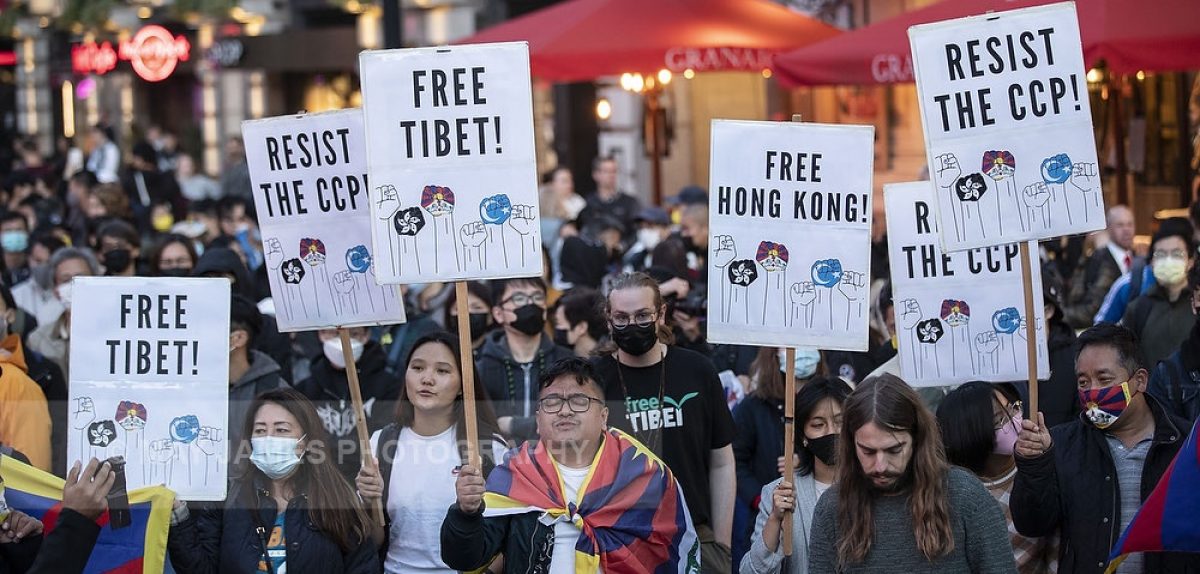By Dr Bhushan Jadhav
The 2024 Lok Sabha elections in India have concluded with significant outcomes. Here’s a comprehensive analysis by renowned Political Strategist, Psephologists, Dr. Bhushan Jadhav PHD Political Science MBA Finance.
Election Overview:

The elections saw a high voter turnout across the country, conducted in seven phases. A notable increase in millionaire candidates was observed, with 93% of the winning candidates being MILLIONAIRE.
The BJP secured 240 seats, falling short of the majority mark of 272, indicating a need for coalition support.
The Congress and other parties forming the INDIA bloc showed a strong performance, securing 233 seats.
State-Wise Results and Statistics:
Uttar Pradesh (UP): The BJP’s seat count in UP fell from 64 in 2019 to 33, while the Samajwadi Party emerged as a significant player, winning 43 seats.
Maharashtra: The MVA (Maharashtra Vikas Aghadi) showed an advantage, indicating effective collaboration among Congress, Uddhav Thackeray, and Sharad Pawar.
West Bengal: Mamata Banerjee successfully defended her stronghold, with her party securing 30 seats.
Tamil Nadu: The state witnessed a complete sweep by the opposition, with 39 seats going to the INDIA bloc.
Analysis of Political Dynamics:
The rural vote played a crucial role, with the BJP losing a third of its rural constituencies, reflecting discontent over jobs and inflation.
Economic Impact: The stock market showed a record high performance as exit polls triggered optimism, but the final results led to a more cautious approach.
Alliances: The BJP’s reliance on allies like the TDP and JD(U) has become more pronounced, with these parties pressing for significant roles such as the Speaker of the Lok Sabha.
Key Takeaways:
The election results indicate a shift in the political landscape, with the BJP needing to form a coalition government.
The rise of the INDIA bloc suggests a growing demand for change and accountability.
Economic concerns, particularly in rural areas, have significantly influenced the election outcomes.
This analysis provides a snapshot of the current political scenario post the 2024 Lok Sabha elections, reflecting the complexities and dynamics of India’s democracy.
Internal Security Challenges: India’s internal security landscape is complex, influenced by both external and domestic factors. The country faces various challenges such as:
Insurgencies: Persistent insurgencies in regions like Jammu and Kashmir, the Northeast, and Central India pose significant threats.
Cross-border Terrorism: There is an ongoing concern about cross-border terrorism, particularly from neighboring countries like Pakistan.
Cybersecurity: With rapid digitization, cybersecurity has become a critical area, with threats of cyber-attacks, espionage, and data theft.
Organized Crime: Issues like human trafficking, drug trafficking, and organized crime continue to challenge law enforcement agencies.
Foreign Policy Challenges: India’s foreign policy is navigating a dynamic global environment with several challenges:
Geopolitical Tensions: Ongoing conflicts like the Russia-Ukraine war and Israel-Hamas tensions impact India’s foreign policy decisions.
China’s Assertiveness: The rise and assertiveness of China remain the most significant external challenge, affecting India’s strategic and border policies.
India’s Geopolitical Strategy: Navigating the Dragon’s Ascent
In the intricate chessboard of global geopolitics, India finds itself at a crossroads, particularly in its approach to China’s rising assertiveness and the delicate situation with Taiwan. The BJP-led NDA coalition government, freshly mandated in 2024, stands before a multifaceted challenge that will test its diplomatic acumen and strategic foresight.
The Dragon’s Shadow: China’s Growing Dominance
China’s ascendancy in the international arena has been marked by a blend of economic prowess and military might, casting a long shadow over the Indo-Pacific region. The new Indian government must tread a path that balances assertiveness with pragmatism.
Border Disputes: The Perennial Thorn
The India-China border dispute remains a thorny issue, with sporadic tensions flaring up along the Line of Actual Control (LAC). The government’s strategy seems to be one of strengthening crisis management mechanisms and creating buffer zones to prevent skirmishes from escalating. The emphasis on diplomatic dialogue and military disengagement suggests a preference for peaceful resolution, albeit backed by a readiness to defend territorial integrity.

Source: https://twitter.com/narendramodi/
Conclusion: Charting a Course Amidst Turbulent Waters
The BJP-led NDA government’s handling of China’s dominance and aggression, its nuanced policy towards Taiwan, and the approach to the border dispute will be pivotal in shaping India’s geopolitical destiny. The path ahead is fraught with challenges, but also ripe with opportunities to affirm India’s position as a major player on the world stage. The government’s ability to navigate these complex dynamics with a blend of strategic patience and proactive diplomacy will determine the success of its foreign policy in the years to come.
Global Alliances: Balancing relationships with major powers and forming strategic alliances are crucial for India’s global positioning.
BJP NDA Government’s Approach: The BJP-led NDA government aims to address these challenges through various policies and initiatives:
Economic Growth: The government’s focus on making India the third-largest economy by 2027 and strengthening economic resilience.
UNSC Membership: Pursuing permanent membership in the United Nations Security Council is a key foreign policy goal.
Security Reforms: Emphasis on counterterrorism measures and modernizing the military and security infrastructure to deal with internal and external threats.
In conclusion, India’s path ahead is marked by a mix of traditional and non-traditional security challenges. The BJP-led NDA government’s policies are expected to focus on economic growth, strategic alliances, and security reforms to navigate these challenges effectively. The government’s ability to balance domestic security concerns with its foreign policy ambitions will be critical in determining India’s future trajectory on the global stage.
The political landscape of India has seen a significant transformation from the BJP’s solo majority in 2014 and 2019 to the coalition dynamics of the NDA government in 2024. Here’s the differences:
2014 & 2019: The Era of BJP’s Dominance
In 2014, the BJP emerged as a formidable force, securing a majority on its own with 282 seats, marking the end of unstable coalition governments. This victory was attributed to a wave of support for Narendra Modi’s leadership and his promise of economic reform and good governance. The party replicated its success in 2019, crossing the majority mark with 303 seats, reinforcing its position and the public’s faith in its policies.
2024: The Coalition Compromise
The 2024 general elections have painted a different picture. Despite winning the elections, the BJP-led NDA’s victory feels like a defeat due to the reduced number of seats compared to previous years. The BJP managed to secure only 240 seats, necessitating a coalition with the NDA to form the government. This outcome reflects a shift in voter sentiment and suggests a desire for a more inclusive and diverse government.
Key Differences Between the Governments
Majority vs. Coalition: The BJP’s standalone majority in 2014 and 2019 provided a strong mandate, allowing for decisive policymaking. In contrast, the 2024 coalition will require consensus and compromise, potentially leading to more moderate and inclusive policies.
Policy Implementation: A strong BJP government had the liberty to implement policies with relative ease. The NDA coalition might face challenges in policy implementation due to differing ideologies and priorities among alliance partners.
Foreign Policy: The BJP’s robust approach to foreign policy might see adjustments as the coalition government balances the diverse perspectives of its partners, especially concerning sensitive issues like relations with neighboring countries.
Economic Reforms: Economic reforms that were aggressively pursued by the BJP might see a slower pace or a different direction as the coalition government seeks to accommodate the economic visions of its constituent parties.
Impact of Elections on the Indian Stock Market
The recent elections have had a noticeable impact on the Indian stock market. After the Bharatiya Janata Party (BJP) secured a narrow victory, the stock market experienced its most significant drop since 2020. This reaction was attributed to the BJP losing its parliamentary majority, which has led to a coalition government. Despite this initial reaction, the market’s performance is closely tied to the broader economic policies and stability that the new government will pursue.
The question of India’s emergence as a superpower and its position among the top three economies globally is multifaceted, involving economic growth, political stability, and geopolitical dynamics.
India’s Economic Trajectory
India’s economy has shown remarkable resilience and growth, outpacing other major economies. It surpassed the UK as the fifth-largest economy and is projected to overtake Japan and Germany to reach the third spot by 2027. This growth is driven by a combination of factors, including a digital revolution, infrastructure development, and policy reforms. However, challenges such as unbalanced growth and unrealized demographic potential remain.
Political Landscape Post-Elections
The recent elections have resulted in a coalition government, which may affect the pace and implementation of economic policies. While the BJP remains the largest party, it will need to navigate coalition politics, which could introduce complexities in decision-making and policy execution. This political shift could impact investor confidence and the execution of reforms necessary for India to achieve its economic ambitions.
Superpower Status and Global Ranking
The notion of India becoming a superpower is supported by its economic indicators and global analysts’ predictions. Goldman Sachs has forecasted that India could become the world’s second-largest economy by 2075, and other projections suggest its purchasing power could surpass that of the U.S. by 2050. These predictions underscore India’s potential, but they also highlight the long-term nature of such a transformation.
Impact of Election Results
The ‘shock’ election results have been interpreted as a win for democracy but also as a setback for the Modi government’s strong mandate. The results have reaffirmed the unpredictable nature of Indian politics and the resilience of its democracy. While the BJP’s reduced majority could complicate its economic agenda, it is not necessarily a derailment of India’s path to becoming a superpower.
Conclusion
India’s potential to emerge as a superpower and one of the top three economies is evident from its current growth trajectory and the optimistic forecasts by global analysts. However, the recent election results have introduced a new element of uncertainty. The coalition government will need to maintain political stability and continue pushing for economic reforms to realize this potential. The journey to superpower status is a long-term process, and while the recent political developments may pose challenges, they do not negate India’s upward economic trend and its prospects on the international stage. The key will be how effectively the new government can navigate these challenges and capitalize on India’s inherent strengths.

This is a comprehensive analysis of the 2024 Indian Election Results by renowned Political Strategist, Psephologists, Dr. Bhushan Jadhav PHD Political Science MBA Finance.

